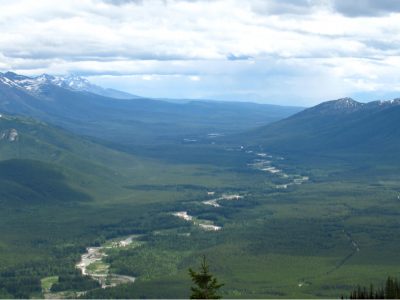 The Flathead River Biomonitoring Program aims to understand the impacts of timber harvest on benthic invertebrate species trait diversity, looking at ecological and functional relationships between the landscape of an unpopulated but commercially logged catchment by investigating spatial and temporal trends in the benthic invertebrate community.
The Flathead River Biomonitoring Program aims to understand the impacts of timber harvest on benthic invertebrate species trait diversity, looking at ecological and functional relationships between the landscape of an unpopulated but commercially logged catchment by investigating spatial and temporal trends in the benthic invertebrate community.
The methodology applied for assessing benthic invertebrate species trait diversity is the Canadian Aquatic Biomonitoring Network (CABIN) method developed by Environment and Climate Change Canada.
The Flathead River is a trans-boundary tributary of the Columbia River, flowing from the Canadian Rocky Mountains south into Montana. This system is significant because it includes the headwaters of three extensive continental river systems (Columbia, Missouri/Mississippi, and Saskatchewan). The Flathead River watershed is known for supporting habitat connectivity, extremely high terrestrial biodiversity, and diverse aquatic life. These qualities provide the watershed with a high level of resiliency towards the uncertain future of climate change.
The Canadian Flathead watershed offers a unique opportunity to observe the isolated effects of timber harvest practices on aquatic health because of its remote location and lack of other human developments. The intent of the project was to examine the aquatic health of five different sub-basins, one of which had no previous logging activity, to observe any effects on benthic macroinvertebrates and their community composition at each site over the five-year period.
Using the CABIN protocol, Living Lakes Canada Staff collected benthic macroinvertebrate samples — the community of organisms that live in the substrates along the bottom of a river or stream — and water quality data in five tributaries in the Canadian Flathead River watershed between 2013 and 2017.
This study was completed in an effort to support landscape conservation and improve resource management in the watershed.
The Flathead River Biomonitoring Project was a collaboration with Wildsight, Canfor, Univeristy of Montana, Flathead Lake Biological Research Station, US Fish and Wildlife Service, University of New Brunswick and Selkirk College Geospatial Research Centre to foster data sharing, cross-sector relationship building, and improve knowledge of this transboundary watershed.





